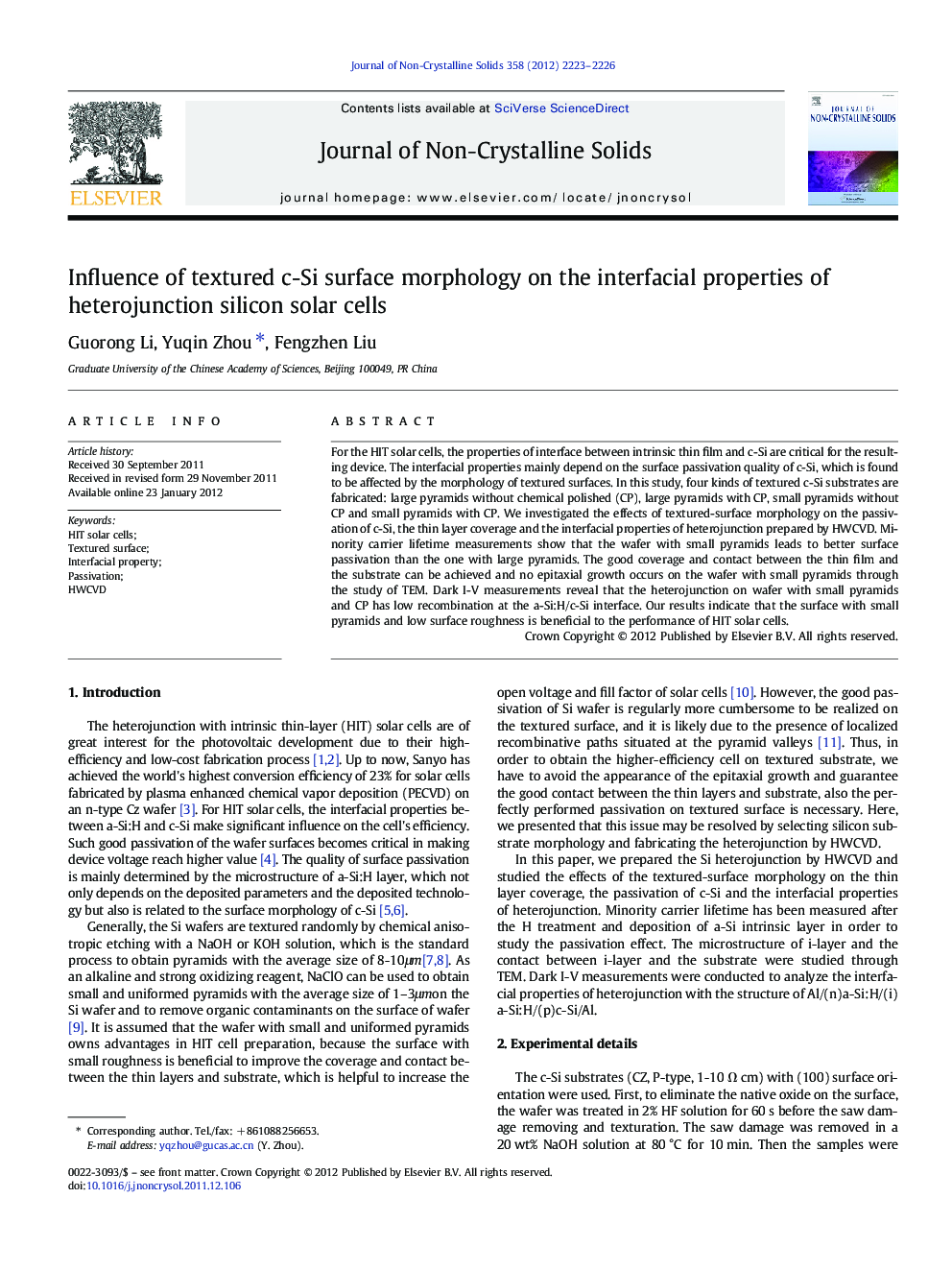| Article ID | Journal | Published Year | Pages | File Type |
|---|---|---|---|---|
| 1481707 | Journal of Non-Crystalline Solids | 2012 | 4 Pages |
For the HIT solar cells, the properties of interface between intrinsic thin film and c-Si are critical for the resulting device. The interfacial properties mainly depend on the surface passivation quality of c-Si, which is found to be affected by the morphology of textured surfaces. In this study, four kinds of textured c-Si substrates are fabricated: large pyramids without chemical polished (CP), large pyramids with CP, small pyramids without CP and small pyramids with CP. We investigated the effects of textured-surface morphology on the passivation of c-Si, the thin layer coverage and the interfacial properties of heterojunction prepared by HWCVD. Minority carrier lifetime measurements show that the wafer with small pyramids leads to better surface passivation than the one with large pyramids. The good coverage and contact between the thin film and the substrate can be achieved and no epitaxial growth occurs on the wafer with small pyramids through the study of TEM. Dark I-V measurements reveal that the heterojunction on wafer with small pyramids and CP has low recombination at the a-Si:H/c-Si interface. Our results indicate that the surface with small pyramids and low surface roughness is beneficial to the performance of HIT solar cells.
► In this study, four kinds of textured c-Si substrates are fabricated. ► The wafer with small pyramids leads to better surface passivation. ► The good coverage and contact of film can be achieved on small pyramids. ► The heterojunction on wafer with small pyramids and CP has low recombination. ► The surface with small pyramids and low roughness is beneficial to HIT solar cells.
